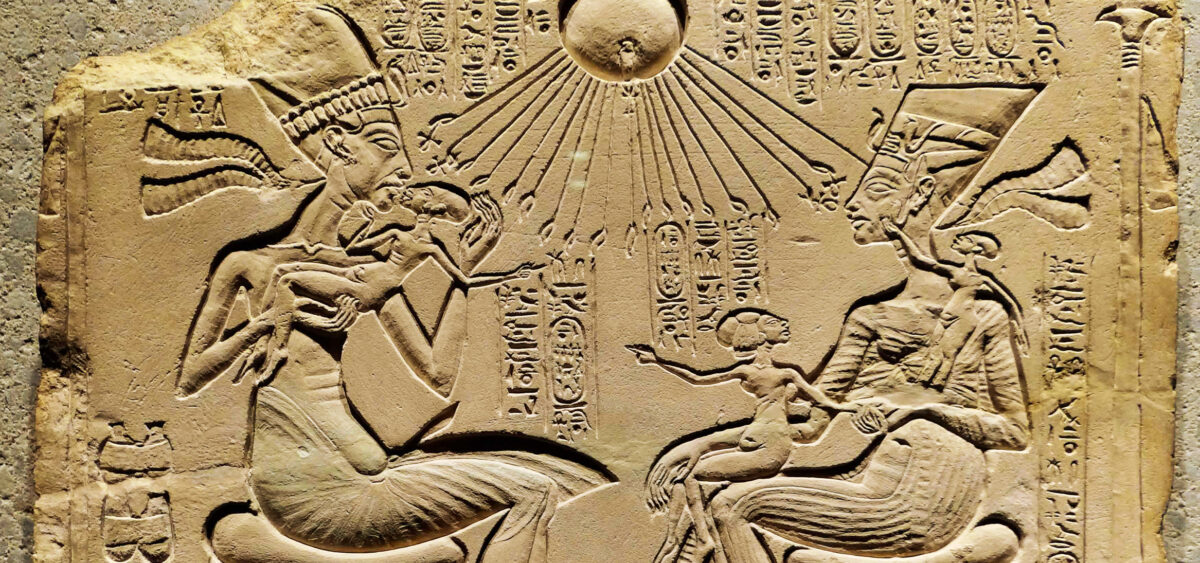
The ruler sits with his children on his knees, warmly caressing his wife’s face – no pharaoh before or after allowed himself to show such human emotions. Akhenaton’s religious and social revolution continues to fascinate researchers to this day.
In the modern world, time passes quickly. We momentarily focus our attention on events and people who have been brutally torn from the depths of anonymity by some event inspiring the fleeting interest of the mass media. But on the other hand, there are people who lived tens, hundreds, sometimes thousands of years ago, who have nonetheless entrenched themselves in the collective consciousness forever. Their faces and figures – once immortalized in stone, pictures, etchings or in some other way – have become icons of civilizations.
Without a doubt, one of the most ancient members of this group is the Egyptian royal couple who ruled during the mid-14th century BCE. She is the beautiful Nefertiti. Her exquisite bust, a treasure of a Berlin museum, still inspires delight. He is the pharaoh Akhenaton. His strange and seemingly irregular depictions are hard to forget, and his extraordinary life and achievements are an endless source of inspiration for the human imagination.
A genius or a deviant
Some people hold that Akhenaton was a brilliant religious reformer who was the first in history to introduce the monotheistic religion of the Sole God, that is, the Aten. According to others, he was just a smart politician, who did so in order to restrict the power of the priests of the old gods, above all the Thebean Amun. In another interpretation, he was a mystic, to whom God himself appeared – that very God, the Aten. Some saw him as a dreamer and pacifist,








